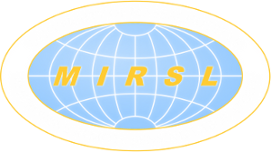Wind Vector Scatterometry
 MIRSL conducts research in the interaction between air and sea through wind-driven roughening of the sea surface. The microwave signature of the surface can be used to deduce the wind speed and direction, and microwave satellites measure global ocean surface winds using this technique. Such instruments are called scatterometers. Several generations of satellite scatterometers have operated since the first measurements made by the SeaSAT scatterometer in 1979.
MIRSL conducts research in the interaction between air and sea through wind-driven roughening of the sea surface. The microwave signature of the surface can be used to deduce the wind speed and direction, and microwave satellites measure global ocean surface winds using this technique. Such instruments are called scatterometers. Several generations of satellite scatterometers have operated since the first measurements made by the SeaSAT scatterometer in 1979.
NASA-developed scatterometers have operated at Ku-band and include the SeaSAT scatterometer (SASS), NSCAT, and Seawinds on ADEOS-II and on QuikSCAT. European scatterometers have operated at C-band on the ERS series of research satellites, and more recently the ASCAT instrument on the operational MetOP satellites. India and China have also recently launched satellite scatterometers.
MIRSL operates a pair of scatterometers (one Ku-band and one C-band) that are installed aboard the NOAA P-3 research aircraft. We use these to study ocean surface signatures, particularly in high winds. The primary sources of high winds are hurricanes and high-latitude winter storms. The scatterometers also profile the intervening atmosphere between the aircraft and the sea surface, and the entire system is known as the IWRAP radar.
